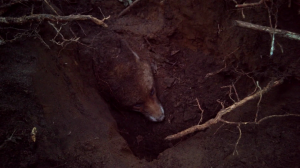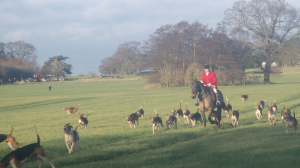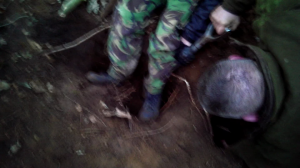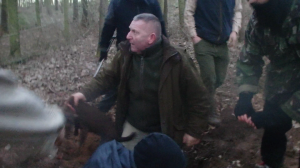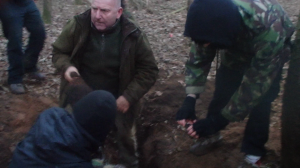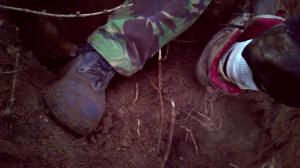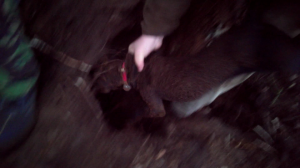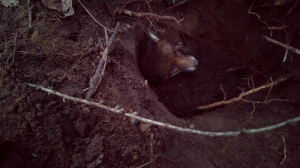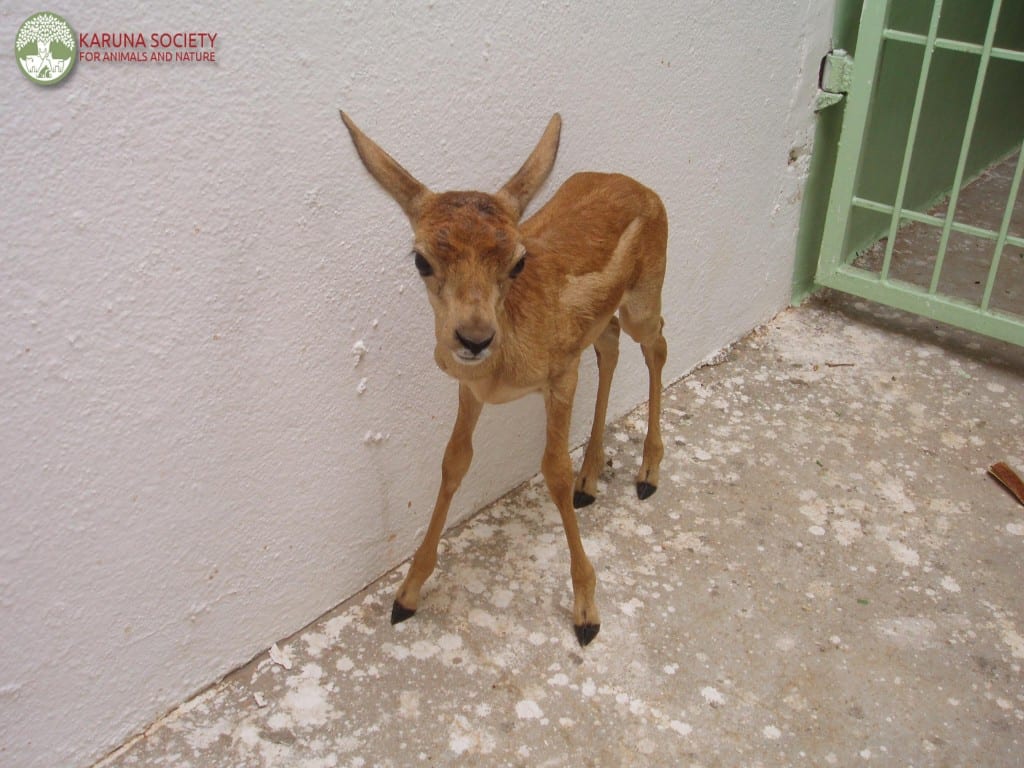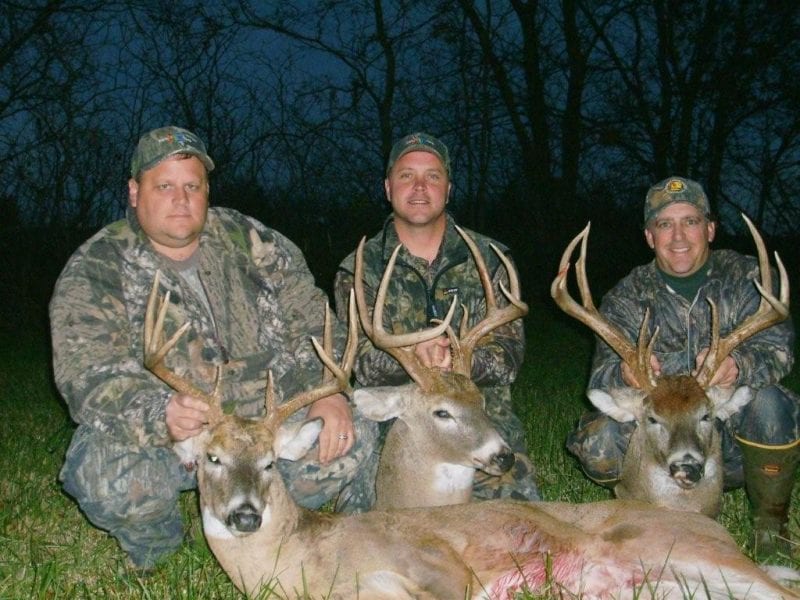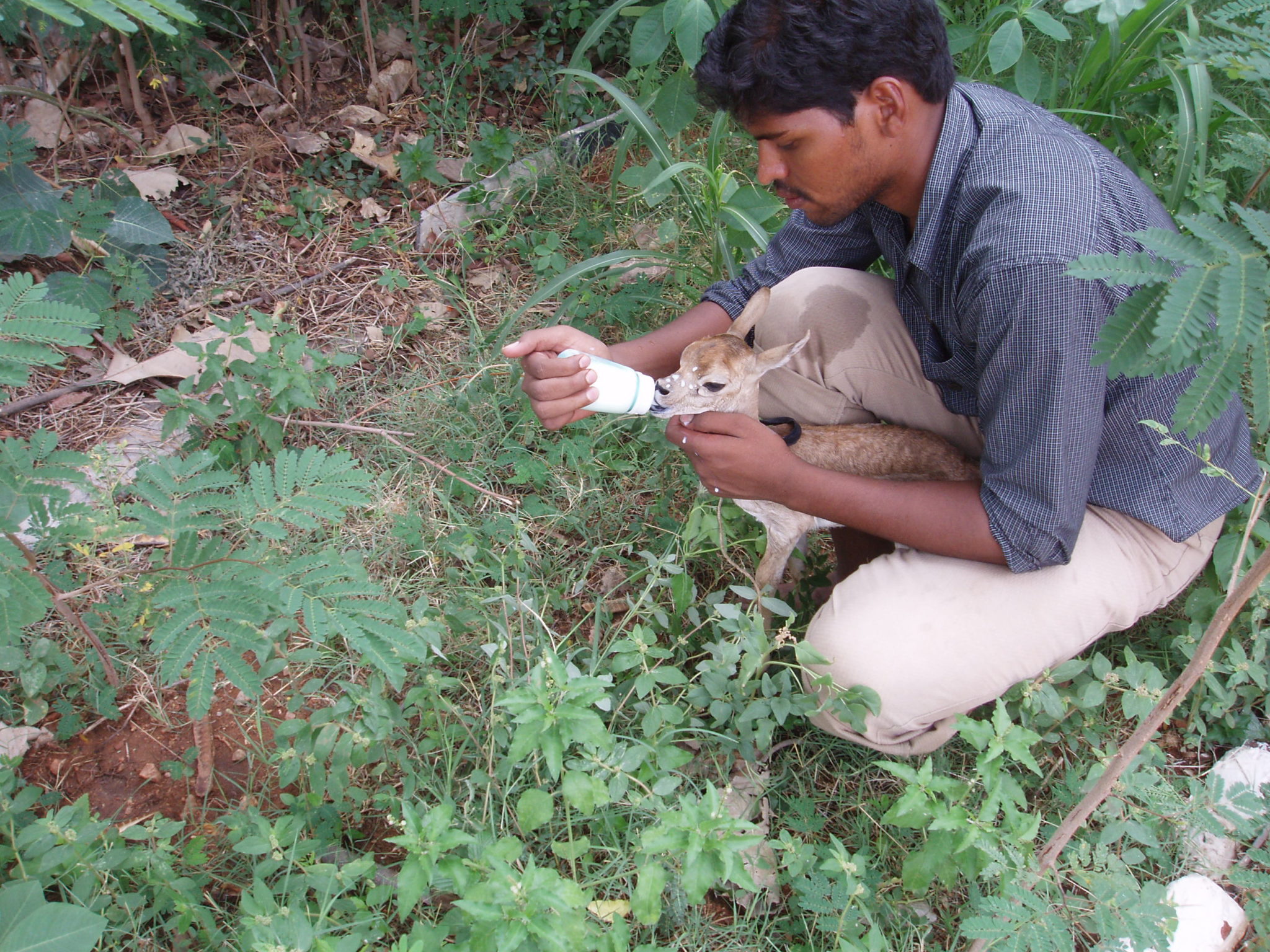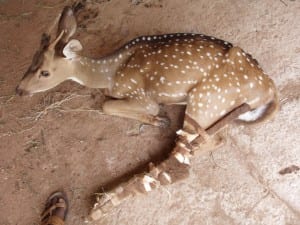Special From ANIMAL PEOPLE, November/December 2013:
Editorial feature:
Examining the odds for an end to horse slaughter
KIM BARTLETT & MERRITT CLIFTON

Either pending legislation or ongoing litigation could bring the resumption of horse slaughter within the U.S. for human consumption this winter, or close off the possibility. Which might happen is anyone’s bet. It is even possible that court decisions will allow horse slaughter to resume for a time, only to be again stopped by Congress, as it was in 2007.
For example, the final reconciled version of the 2014 Farm Bill may include language already approved as part of both the House and Senate drafts that would defund USDA inspections of horse slaughterhouses. USDA inspection is required if the meat of any animal is to be sold across state lines or internationally for human consumption. Congress did not allow the USDA to inspect horse slaughtering plants from 2007 to 2011, but the past two Farm Bills have not prevented horse slaughterhouse inspections. This allowed the horse industry an opening to try to jump back into horsemeat production for export.
Pending legislation might also halt the export of horses to slaughter in Canada and Mexico. This, however, is betting against the odds. Bills meant to end horse exports for slaughter have remained stalled in Congress since mid-2007, when the USDA stopped inspecting horse slaughterhouses, forcing the closure of what were the last three in the U.S.. The current version of the anti-horse export legislation, the Safeguard American Food Exports Act, was introduced in March 2013 as HR 1094/S 541, with 159 House cosponsors and 27 cosponsors in the Senate. The House cosponsors include only 30 members of the Republican majority. Based on statistical criteria, GovTrack.us rates the Safeguard American Food Exports Act as having at best a 17% chance of clearing committee and a 2% chance of passage.
Perhaps the highest hurdle to passage of the Safeguard American Food Exports Act, or any legislation against exporting horses to slaughter, is the insistence of the horse industry that without some way to slaughter horses, the industry has no way to dispose of old, injured, or simply surplus stock. Backed by the American Veterinary Medical Association, the industry has tried, so far successfully, to leverage resumption of horse slaughter in the U.S. against cutting off exports.
 But while animal advocates may hope that the resumption of horse slaughter in the U.S. could lead to prohibition of exporting horses for slaughter, there are two reasons to believe that it would not. First, the horse industry can be expected to balk at anything that might hold down the price of horseflesh, such as eliminating the possibility of U.S. and foreign killer-buyers bidding against each other at horse auctions.
But while animal advocates may hope that the resumption of horse slaughter in the U.S. could lead to prohibition of exporting horses for slaughter, there are two reasons to believe that it would not. First, the horse industry can be expected to balk at anything that might hold down the price of horseflesh, such as eliminating the possibility of U.S. and foreign killer-buyers bidding against each other at horse auctions.
Second, any legislation forbidding commerce with Canada and Mexico that is legal within the U.S. is almost certain to be taken before a North American Free Trade Agreement tribunal, which would be very likely to find it in violation of NAFTA principles.
Realistically, Congress must close the possibility of horse slaughter resuming here before it can move successfully against exports.
Sprinting toward a photo finish
How rapidly the horse slaughter issue can pirouette was illustrated between Friday morning, November 1, 2013, and Monday afternoon, November 4. And then it changed again on December 13.
An Oklahoma state law authorizing the construction of a horse slaughterhouse took effect on November 1, but required that a prospective operator must get a USDA permit first. Currently there appear to be no applicants to kill horses for human consumption in Oklahoma. However, the law issues an invitation to investors.
Savvy horseflesh brokers may be holding back because the global market for horsemeat has collapsed in recent years, leading to widespread illegal substitution of horsemeat in European “beef” products. But would-be horse slaughter entrepreneurs may also be holding back to see which way federal judges and the U.S. Congress jump.
Barbara Hoberock of the Tulsa World Capitol Bureau filed her report on the new Oklahoma law at 12:00 noon––just 15 minutes before Tim O’Neill of the St. Louis Post-Dispatch broke word that Albuquerque U.S. District Judge Christina Armijo had rejected a lawsuit by the Humane Society of the U.S. and other animal protection groups that alleged the USDA had improperly issued horse slaughtering permits to Valley Meat Company, of Roswell, New Mexico, and Rains Natural Meats, of Gallatin, Missouri, because they had not completed adequate environmental impact studies.
The Armijo ruling came as something of a surprise, since she had granted a temporary restraining order against either company slaughtering horses, based on the HSUS claim that the killing would violate their wastewater disposal permits. But Rains Natural Meats was reportedly ready to begin slaughtering horses on Monday morning, with Valley Meat to start a week later.
In Denver, however, the 10th U.S. Circuit Court of Appeals on Monday issued a temporary injunction prohibiting the USDA from doing slaughter inspection at either facility, pending review of the Armijo decision. On December 13, 2012 the injunction was lifted.
There the legal progress of the U.S. horse slaughter issue paused. Legislative motion on any aspect of horse slaughter before the end of 2013 appeared to be unlikely, since Congress, in a historical rarity, failed to reconcile and pass conflicting editions of the 2013 Farm Bill before Thanksgiving. Only after a reconciled Farm Bill is passed––and only if the language defunding inspection of horse slaughterhouses is included––is there likely to be another omnibus bill to which the Safeguard American Food Exports Act might be attached.
Foundering in Europe
Parallel issues are playing out in Europe, believed by U.S. would-be horse slaughter entrepreneurs to be hungry for horsemeat.
Irish agriculture minister Simon Coveney on October 3, 2013 told the Oireachtas (Irish Parliament) Committee on Agriculture that only 6,500 horses had been slaughtered in Ireland during the first nine months of 2013, down from 24,000 in 2012.
“We have really tightened up the rules since the horse meat scandal, which has resulted in a reduction of the number of factories slaughtering horses and also in a very, very tight system now in terms of micro-chipping, identification and passports and so on,” Coveney testified.
Coveney did not acknowledge that declining demand and lower prices paid for horsemeat were why the scandal occurred in the first place. Only four of the 28 European Union nations, according to Eurostat, now knowingly consume even as much as a pound of horsemeat per person per year––Belgium, Italy, and the Netherlands, all at just over two pounds, and Luxembourg, at about 1.3 pounds. France, once in the same bracket, now consumes half as much as Luxembourg, but remains in fifth place. Just four other EU member nations consume any discernable amount of horsemeat.
As well as eluding Coveney, the realities of the horsemeat trade seemed to elude Princess Anne of the United Kingdom, president of the World Horse Welfare charity, who endorsed expanding horse slaughter in a November 15, 2013 address to the WHW annual conference.
Unlike royalty who are mere titular heads of charities, Anne has significant equestrian credentials. She was a medalist at the European Eventing Championships in 1971 and 1975, and rode for Britain in the 1976 Olympic Games equestrian events at Bromont, Quebec. Anne later served from 1986 to 1994 as president of the Fédération Équestre Internationale. Her daughter Zara Phillips was a medalist at the 2005 European Eventing Championship and the 2006 World Equestrian Games, and helped to win a team silver medal at the 2012 Olympics in London.
But Anne reportedly had just heard equestrian industry claims that as many as 7,000 British horses might suffer neglect this winter because no one bought them to kill.
Rather than emphasize that speculators in horses have an obligation to look after the horses they breed or buy, Anne opined that “Our attitudes to the horsemeat trade and the value of horsemeat may have to change.”
Anne suggested that the slaughter of former Polish workhorses involves cruelty mainly because the horses are transported before they are killed, and that horses in France might better treated because many are eaten.
“If that’s true then,” Anne concluded, “that they value their horses, they look after them well, because they›re in the horsemeat trade, should we be considering a real market for horsemeat and would that reduce the number of welfare cases if there was a real value in the horsemeat sector?”
People for the Ethical Treatment of Animals founder Ingrid Newkirk was in November 2011 quoted as saying similar by Christian Science Monitor staff writer Patrik Jonsson. “There was a rush to pass a bill that said you can’t slaughter them [horses] any more in the United States,” Newkirk said. “But the reason we didn’t support it, which sets us almost alone, is the amount of suffering that it created,” by encouraging the export of horses for slaughter in Mexico and Canada, “exceeded the amount of suffering it was designed to stop.”
Newkirk supported the 2011 legislation that authorized the USDA to resume inspecting horse slaughterhouses, she explained, because while this “didn’t mean any horses were spared, it does mean the amount of suffering is now reduced again.”
But contrary to Newkirk’s reported statement to Jonsson, the ANIMAL PEOPLE files indicate that PETA supported the 2007 legislation that suspended federal funding for inspection of horse slaughterhouses, and celebrated it, when passed, as a victory. PETA argued then that horse exports to slaughter should have been stopped too––as did every other prominent advocate of the 2007 bill.
Overlooked by practically everyone discussing horse slaughter, on either side of the Atlantic Ocean, is that no market pressure in Europe and no legislative or legal action in the U.S. has in any way inhibited horse slaughter for animal consumption. The only restriction on horse slaughter to feed animals is that the horses may not be killed by pentobarbital injection, which would make their flesh unsafe for another animal to eat. But horses are rarely killed by pentobarbital, since the required dose would be about 100 times the average dose for a dog and several hundred times the average dose for a cat. Rather, when horses are euthanized due to incurable illness or injury, whether in a stable, a field, a busy street, or alongside a trail or racetrack, the usual instrument of dispatch is a captive bolt gun, the same instrument used in a slaughterhouse. Since a captive bolt gun can be used safely almost anywhere, horses killed for animal food need not be transported alive at all. Their carcasses can be collected by renderers.
The potential market for horsemeat as dogfood and food for zoo carnivores is bigger than ever. But this option does not appeal to much of the the horse industry, because renderers pay relatively little for horse carcasses, compared to the prices historically paid for horses slaughtered for human consumption. In areas far from rendering facilities, renderers even charge to haul away dead stock.
Data collected in 2009 by The Unwanted Horse Coalition indicated that the average cost of euthanizing and disposing of a horse was $385. Yet the difference between this and the sum a horse might fetch at slaughter auction is typically less than the $600-$1,000 price of a saddle.
The horses sold to slaughter in 2006 yielded an average meat value of $619, according to the General Accounting Office. Subtracting from this the cuts going to transporters, auction yards, and slaughterhouses, the average return to people selling horses to be killed appears to have been under $250.
Of the $39 billion per year realized by the U.S. horse industry, just $65 million was realized through exporting horsemeat in 2006––about 1.6%. Depressed betting on a lackluster Kentucky Derby field can cost the industry more in any given year than the loss of this revenue. The Kentucky Derby alone generates 10 times more economic activity per year than the entire horse slaughter business has in any year since 1990.
Pyramid scheme

But being able to send horses to slaughter is important to the horse industry because it permits the horse industry to continue high-volume speculative breeding. The small-time gamblers lined up at parimutuel windows to place their bets are the economic foundation of the horse racing industry, but the economic structure of the horse industry as a whole more closely resembles a pyramid scheme than any other nominal branch of agriculture. Reality is that the way small fortunes are made in either breeding, showing, or racing horses is by starting with large fortunes. Those who prosper are those who persuade other people to make large speculative investments in breeding fees, on the gamble that the right combination of ancestry might produce a winning show horse or racer, whose reproductive potential will attract other people’s speculative investments.
The prosperity of almost two-thirds of the horse industry depends largely on luring money earned elsewhere into breeding, keeping, and training horses for whom there is no real market demand if they do not prove to be winners. Only the occasional winners ever recoup more for the investors than the money put into them.
If investors in racing and show horses were obligated to keep those horses throughout their natural lives, the horse industry would collapse. The upkeep of speculatively bred horses who fail to bring returns on investment would soon siphon so much money out of the deep pockets of speculative investors that little would be left to pour into further breeding and training.
Therefore the industry needs a way to unload losing horses as rapidly as they lose investment appeal. That means selling them into another use, most often as riding horses––or, since the riding horse market is perpetually glutted, selling them to slaughter.
Investors in racing and show horses are not like farmers who invest in planting crops, hoping that the soil, sun, and rain will produce high yields. The affluence of the horse industry is sustained not by successful production, since only one horse at a time can win each show division or race, but by the volume of turnover.
High yield or low, crops have food or fiber value, and produce a material benefit to the rest of society. Horse breeding, upkeep, and training by contrast generates so little material benefit to the rest of U.S. society that without the speculative input, the entire industry would operate at a substantial loss.
Yet horse breeders still enjoy many of the subsidies, incentives, tax breaks, and other privileges of farmers, as if horses still had the importance to society as transportation and work animals that they did 100 years ago.
The current U.S. horse population is 9.2 million, according to the American Horse Council Foundation, of whom only 3.6 million live at facilities even recognized by the USDA as “farms.” AHCF data indicates that about 2.7 million horses are kept by people involved in showing horses; 845,000 are kept by people involved in racing.
Though some show horses are exhibited into their twenties, most who fail to meet conformation standards, prove difficult to train, suffer injury, or are spoiled by bad riders are culled early. Thus the average career of a show horse is probably five years or less. The average duration of use of a racehorse is less than four years.
Unwanted Horse Coalition data suggests that while only about one horse in six is retired from use before age 3, horses in the age range of three to five years are more likely to be retired from use, whether through donation, sale to slaughter, or euthanasia, than to be sold to other users.
Of the horses in the three-to-five-year-old bracket who are sold, more than 80% are sold for further use, but apparently mostly not for the purpose for which they were bred. About 3.9 million horses are used for recreational riding, but Kentucky Equine Survey data indicates that about three million of them were bred originally for show or racing. The Unwanted Horse Coalition numbers tend to affirm this interpretation.
The Unwanted Horse Coalition found that 31% of the horses disposed of in some manner were quarter horses, chiefly bred for show and amateur competition; 12% were thoroughbreds, produced for racing; 33% were other breeds used mainly for show; and 3% were standardbreds, used for harness racing. In other words, 79% of the horses disposed of, including those sold for further use, were speculatively bred.
In hard numbers, of about six million horses (at most) who were bred for their current use, about 3.5 million were bred for racing or show: about 58%. This coincides with the 56% of horse keepers found by the Unwanted Horse Coalition to have sold horses either through auctions or directly to slaughter.
U.S. thoroughbred breeding fell 25% from 2008, when about 30,000 were foaled, to 2011, when the Jockey Club registered about 22,500 foals. Show horse breeding appears to have fallen from about 100,000 to circa 70,000 during the same years. The combined foaling numbers, declining from about 130,000 to about 100,000, parallel the numbers of horses exported for slaughter, which dropped during the same years from circa 137,000 to circa 105,000.
This is no accident. Each foal displaces an older horse––either a horse nearing the end of a natural lifespan, or, much more often, a horse who no longer attracts speculative interest.
Ending horse slaughter might not completely end speculative breeding, but would significantly slow the pace. Thus the horse industry can be expected to whip furiously right to the finish of the issue.
A NOTE ABOUT THE AUTHORS
ANIMAL PEOPLE publisher Kim Bartlett is a veteran of 30 years in humane work and vegetarian advocacy, with emphasis on humane education and communications. She earned humanitarian service awards from various humane organizations in Texas for animal rights efforts in the 1970s and ’80s. In 1986, Kim left Texas to become editor of The Animals’ Agenda magazine, a position she held until 1992, when she and Merritt Clifton began ANIMAL PEOPLE. Kim serves as publisher of ANIMAL PEOPLE (she’s formally president of the organization) and is also its primary photographer. Kim’s interest in international affairs has brought ANIMAL PEOPLE into the forefront of humane outreach to the developing world due to her work fostering new animal groups around the world.
ANIMAL PEOPLE editor Merritt Clifton, a second-generation lifelong vegetarian, has teamed with Kim Bartlett to provide information service to the humane community since 1986. His duties for ANIMAL PEOPLE include researching and writing more than 200 articles and filling more than 2,000 information requests per year. A reporter, editor, columnist, and foreign correspondent since 1968, specializing in animal and habitat-related coverage since 1978, Clifton was a founding member of the Society of Environmental Journalists, and is a four-time winner of national awards for investigative reporting.
Clifton and Bartlett are frequent contributors to The Greanville Post on animal issues.
_______________________________
Merritt Clifton
Editor, ANIMAL PEOPLE
P.O. Box 960 | Clinton, WA 98236
Telephone: 360-579-2505
Cell: 360-969-0450
Fax: 360-579-2575
E-mail: anmlpepl@whidbey.com
Web: www.animalpeoplenews.org
ANIMAL PEOPLE
Subscribe to our reports by signing up below.
Subscribe to Animal People (The HTML Edition) by Email
//
